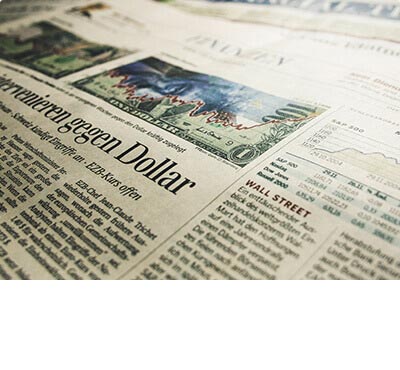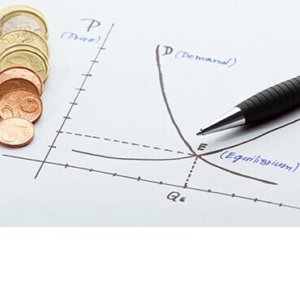- 1.1 Explain the importance of economics.
- 1.2 Compare and contrast the perspectives of microeconomics and macroeconomics.
- 1.3 Explain how economists use theories and models to understand economic issues.
- 1.4 Contrast traditional economies, command economies, and market economies.


Built from OpenStax’s Macroeconomics
Introduction to Macroeconomics
BNED Courseware for Introduction to Macroeconomics covers the scope and sequence requirements of most introductory macroeconomics courses. The outcome is a balanced approach to both Keynesian and classical views, and to the theory and application of economics concepts. Designed specifically to help beginning students master the principles essential for understanding macroeconomics, students examine both the theory and application of specific economic issues and policy alternatives. With lots of auto- graded practice activities and in-class and homework assignments, student can both understand and apply the economic theory and critically think about economic matters.
Learning Objectives/
- 2.1 Use economic reasoning to explain how individuals make choices.
- 2.2 Explain how the production possibilities frontier model and the law of diminishing returns impacts societal choices.
- 2.3 Explain objections to the economic approaches of decision-making.
- 3.1 Define demand, supply, and equilibrium in markets for goods and services.
- 3.2 Identify factors that cause shifts in demand and supply for good and services.
- 3.3 Describe how changes in supply and demand change equilibrium price and quantity.
- 3.4 Explain price ceilings and price floors.
- 3.5 Compare and contrast the economic efficiency of supply and demand with price floors and price ceilings.
- 4.1 Explain the factors that shift supply and demand in the labor market including technology and minimum wage.
- 4.2 Describe demand and supply in financial markets.
- 4.3 Apply economics models to analyze prices and quantities.
- 5.1 Calculate the price elasticity of demand and supply.
- 5.2 Identify types of elasticity.
- 5.3 Analyze how price elasticity will affect changes in quantity and total revenue when supply and demand change.
- 5.4 Explain how elasticity can be measured in areas other than price.
- 6.1 Describe gross domestic product, net exports, and net national product.
- 6.2 Explain the process of adjusting nominal values to real values.
- 6.3 Describe economic fluctuations and the importance of tracking GDP over time.
- 6.4 Explain methods used to compare GDP among countries.
- 6.5 Analyze the limitations of using the GDP to measure the standard of living.
- 7.1 Explain conditions that have created economic growth.
- 7.2 Describe the relationship between labor productivity and economic growth.
- 7.3 Identify contributors to economic growth.
- 7.4 Explain economic convergence advantages and disadvantages.
- 8.1 Explain how the unemployment rates are defined, computed, and analyzed.
- 8.2 Describe the various patterns of unemployment.
- 8.3 Analyze the causes of change in unemployment over the short run.
- 8.4 Analyze the causes of change in unemployment over the long run.
- 9.1 Describe methods of calculating inflation.
- 9.2 Describe how changes in cost of living are measured.
- 9.3 Identify patterns of inflation.
- 9.4 Analyze economic benefits and challenges of inflation.
- 9.5 Explain indexing and its limitations.
- 10.1 Explain merchandise trade balance and current account balance measurements.
- 10.2 Analyze trade balances in historical and international context.
- 10.3 Explain trade balances and flows of financial capital.
- 10.4 Explain how a nation’s saving and investment identity is influenced by the rise and fall of trade deficits.
- 10.5 Compare and contrast trade deficits and surpluses.
- 10.6 Describe the difference between level of trade and trade balance.
- 11.1 Explain macroeconomic perspectives on demand and supply.
- 11.2 Describe how the aggregate demand/aggregate supply model interact at the macroeconomic level.
- 11.3 Explain how productivity growth and changes in input prices change the aggregate supply curve.
- 11.4 Identify influences on aggregate demand.
- 11.5 Explain how the aggregate demand/aggregate supply model incorporates growth, unemployment, and inflation.
- 11.6 Compare and contrast neoclassical and Keynesian views using the aggregate demand/aggregate supply model to understand the economy.
- 12.1 Identify influences of aggregate demand.
- 12.2 Describe the building blocks of Keynesian analysis.
- 12.3 Describe the influences of the Phillips curve and its impact on the theories of Keynesian economics.
- 12.4 Analyze the Keynesian perspective on market forces and the role of government policy in economic management.
- 13.1 Describe the Neoclassical model of aggregate demand and aggregate supply.
- 13.2 Describe the policy implications of the Neoclassical perspective.
- 13.3 Describe the interrelationship between the Neoclassical and Keynesian economic models.
- 14.1 Explain money types and functions.
- 14.2 Classify currency and deposits as M1 or M2 money supply
- 14.3 Explain the role of banks in the economy.
- 14.4 Describe how banks create money and the risks and benefits of money and banks.
- 15.1 Describe the Federal Reserve banking system and central banks.
- 15.2 Explain how bank regulations and supervision protect banks.
- 15.3 Explain how a central bank implements monetary policy in the economy.
- 15.4 Analyze the effects of monetary policy on the economy.
- 15.5 Describe the pitfalls of monetary policy.
- 16.1 Explain how the foreign exchange market works.
- 16.2 Identify demand and supply shifts in foreign exchange markets.
- 16.3 Describe macroeconomic effects of exchange rates.
- 16.4 Compare the different forms of exchange rate policies.
- 17.1 Describe government spending at federal, state, and local levels.
- 17.2 Describe the taxation system in the United States.
- 17.3 Describe how federal deficits and the national debt relate to the economy.
- 17.4 Compare expansionary and contractionary fiscal policies and explain their influence on the economy.
- 17.5 Describe how automatic stabilizers respond to economic events.
- 17.6 Identify practical problems with discretionary fiscal policy.
- 17.7 Analyze the effects of a balanced federal budget and a budget deficit on the economy.
- 18.1 Describe how government borrowing affects investment and the trade balance.
- 18.2 Explain the relationship between fiscal policy, investment, and economic growth.
- 18.3 Analyze the impact of government borrowing on private saving.
- 18.4 Analyze the effect government fiscal policy has on the trade balance.
- 19.1 Describe the diversity of countries and economies across the world.
- 19.2 Analyze the growth policies of countries seeking to improve standards of living.
- 19.3 Identify factors that cause unemployment around the world.
- 19.4 Identify causes of inflation in various countries and regions.
- 19.5 Describe concerns over possible negative consequences of free trade.
- 20.1 Explain absolute advantage, comparative advantage, opportunity costs, and gains of trade when a country specializes.
- 20.2 Evaluate the relationship between the costs of production and comparative advantage.
- 20.3 Explain the relationship between economies of scale and intra-industry trade.
- 20.4 Identify barriers to international trade and the benefits of reducing those barriers.
- 21.1 Use concepts of demand and supply to analyze protectionism.
- 21.2 Analyze how international trade impacts wages, labor standards, and working conditions.
- 21.3 Explain and analyze various arguments that are in support of restricting imports.
- 21.4 Evaluate how regional, national, and global trade agreements are enacted.
- 21.5 Describe the complexities of international trade.
Be the first to review “Introduction to Macroeconomics”
You must be logged in to post a comment.







There are no reviews yet.